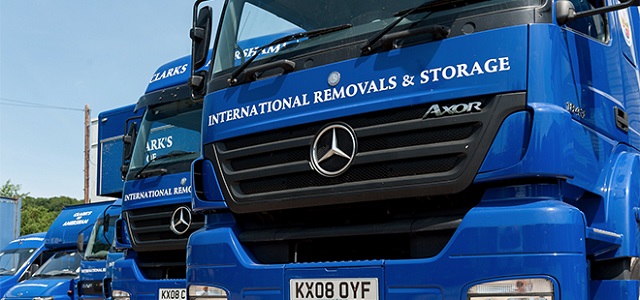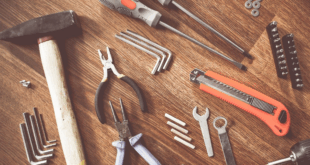The secret to a less stressful removal day is to plan ahead and thoroughly.
So, to help you avoid having a traumatic day, we’ve compiled some top tips to help you. Everything you need to know from packing at one home through to unpacking at the other.
Think of this as your moving house checklist.
DIY or Professional
An important to decision is to decide whether to move yourself or use the professionals. Choosing DIY may seem obvious if you only have a small flat, but do your sums thoroughly. Once you have paid for van rental, fuel and a beer or two and a curry for your mates, you may be surprised. Time off work also has a cost. It is easy to underestimate the time self removal takes, the stress and the work involved.
Unless you only have a few possessions to move, it is worth getting a professional company to quote. During their visit they will walk through your home, room by room taking note of what needs to move, open cupboards so they can judge how many boxes are needed. They will also need to know the location of new home, any parking restrictions and any likely access problems, such as narrow doors or stairs. They will also need to know if any special instructions such as time of access. You will receive a detailed estimate of time and cost.
Professionals will offer an optional packing and wrapping service, for valuable ornaments and furniture, this can be a required for insurance cover.
The Big Clear out
Use your move as a great opportunity to have that much needed sort out. It’s time to throw unwanted possessions out, unload on friends and the charity shops. If you plan earlier enough there should be time to sell unwanted items on e-bay etc. any income will help to fund the move!
DIY Packing
If you’ve decided to pack yourself, allow sufficient time.
- Check your contents insurance will cover damages and breakages
- Obtain professional packing boxes and wrapping either from the remover or you can buy on line, some removers provide these as part of the service
- Boxes come flat, so use plenty of purpose packing tape preferably using a dispenser
- Start in your loft and work your way down, pack, room by room, clearly labelling each box so they are kept together and nothing gets lost
- Line the boxes with packing paper (take care with newspaper as it can stain), bubble wrap is expensive to use it sparingly for delicate or valuable items
- Don’t be tempted to use too larger boxes, if they are too heavy there is more risk of accidents
- Keep items for each room separate
- Clearly label each box with the room to be delivered to in the new home and it’s contents
- Use cushions, pillows and blankets to use up space in a box and to help protect items
- Hanging clothes can be left as specialist hanging boxes are utilised
As well as writing on the box what it contains, it is useful to keep a separate list
Valuable of delicate furniture should be expertly wrapped
Pack hazardous materials, such as paint, bleach, aerosols in a separate box and label clearly
Separately pack important documents such as birth and marriage certificates, you may decide to move these personally
Have a quick access box so you have the essentials when you arrive; coffee, tea, snacks, cups, a kettle, utensils, a kitchen cloth, prepare overnight bags and toiletries. Either take these personally or make sure these items are loaded up last, so they will be coming off first
DIY Removal
Check prices for van hire, comparing the costs for a weekday or weekend hire, don’t underestimate how long it will take. Think of a time and double it! Ensure you hire a van the right size, too big and you may have trouble parking, too small and you’ll have to make too many trips.
Book you van and friends well ahead. Don’t try to do it alone. When loading the van, heavy boxes at the bottom, lighter items on top.
Ensure that your insurance covers your possessions
Choosing the professionals
Get quotes from different companies and check the fine print of the moving day insurance. Make sure the company is a member of the British Association of Removers. Check who’s responsibility self-assembly furniture is, they will charge extra for this. Professionals will offer packing services, this may be a condition for insurance cover, if so consider this for valuable items.
It’s worth having a reserve in case your first choice is not available on the date you find yourself moving.
Depending on the size of your home and the distance of the move, a two day move (or more) may be required.
Pre-Removal Day
Here are a few jobs to do on the day before;
- Disconnect and drain electrical appliances in advance, washing machines normally have a transit kit that should be installed before moving
- Take down fixtures and fittings, such as curtains and blinds before the removal team’s arrival, unless agreed to be left
- Pack up a box with the tea making kit and some snacks
- Collect in one area, items to be left or taken with you; clearly label it as such!
- Empty the loft
The Removal Day
The legal process seems to go on for ever, then seemingly from nowhere a completion date at short notice appears. Panic now sets in trying to book removers, finishing packing and complete numerous other tasks. Stress is certainly reduced if it’s practical and affordable to move on a day after completion has occurred. Be realistic on what can be done in one day. Waiting for that phone call to say the money is in, when the removal men are waiting is not an experience to enjoy.
Have a check list of everything you need to do on the day
Moving Out
Get your list out, tick things off but don’t get in the way;
- Take final readings of gas, electricity and water meter
- If items are still in the loft, ensure that access is provided
- Ensure that space is reserved for the removal vehicle(s)
- You should be be present during the removal to ensure nothing is left behind or taken that shouldn’t be
- Make a last check of all rooms and cupboards before you slam the door for the last time, don’t forget the loft, sheds and garage
Moving In
Get yourself, your partner or a friend to the new premises before the van arrives
- Make sure keys are available and any alarm codes known
- Ensure you have access and that space is reserved if needed for the vehicle(s)
- Label doors so that the removers know what each room is called
- Note down meter readings
- Get the kettle, removing is thirsty work
Who needs to know you’re moving
- Use this moving house checklist to make sure you’ve notified everyone
- Services and utilities; Water, gas, electricity, telephone, post office, cable/satellite and internet, rental companies and TV licensing
- Financial; Banks, building societies, credit card companies, council tax department, National Savings and Premium Bonds, your employer, insurance companies, pension companies, Inland Revenue, social security and your solicitor
- Health; Doctor, dentist and optician
- Motoring; DVLA, Breakdown Recovery Company, vehicle registration and vehicle insurance
- Others; Friends & relatives, subscriptions, milk delivery, newsagent, sports club, library and schools/colleges/universities
Good luck with your move and we hope we’ve been of some help to ensure your day runs as smoothly as possible and most importantly your new abode feels like home sweet home in no time at all.
 Homeowners Club If you are one of the 15 million homeowners in the UK, the free to join online Homeowners Club is for you.
Homeowners Club If you are one of the 15 million homeowners in the UK, the free to join online Homeowners Club is for you.








